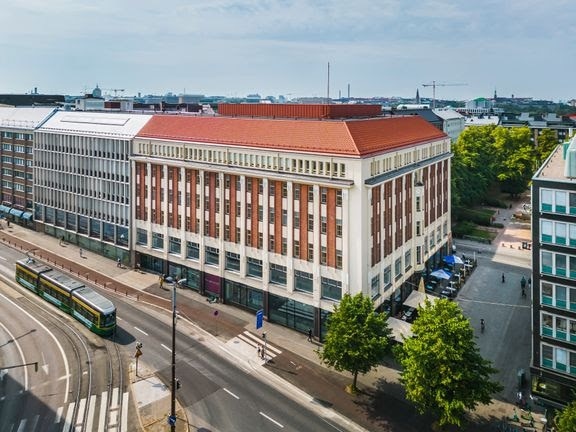Real-estate owner Antilooppi has achieved BREEAM or LEED environmental certification for its entire property portfolio, as one of the first and largest companies in the field in Finland. This is a significant achievement given the size of the real-estate portfolio and the excellent ratings awarded to individual properties.
 Antilooppi has a sizable portfolio, over 400,000 lettable square metres. In addition to offices in the capital area of Finland, the company also owns a shopping centre in Helsinki. Image Credit: Antilooppi
Antilooppi has a sizable portfolio, over 400,000 lettable square metres. In addition to offices in the capital area of Finland, the company also owns a shopping centre in Helsinki. Image Credit: Antilooppi
The Finnish real-estate investment firm Antilooppi has achieved its important strategic aim of environmental certification for its entire portfolio. Antilooppi, which is known for its long-term sustainability efforts, is one of the first real-estate owners to achieve complete certification of such a sizable portfolio, over 400,000 lettable square metres. In addition to offices in the capital area of Finland, the company also owns the Ruoholahti shopping centre in Helsinki.
Most of the company’s office properties have achieved a BREEAM In-use environmental certificate. Of the BREEAM In-use-certified properties, as many as 10 have achieved an Excellent rating and the remaining 18 a Very Good rating. Of the five LEED-certified properties, two have achieved the highest level, Platinum: Siltasaari 10 in Hakaniemi and Lintulahdenvuori in Suvilahti, both in Helsinki.
“Achieving 100% certification for our property portfolio by the end of 2023 has been one our most important goals in line with our sustainability strategy. This fabulous achievement shows that we’ve done long-term, effective work to minimize our properties’ environmental impact. Our clients today are increasingly sustainability-minded, and these certificates allow us to offer them offices that are proven to meet high environmental standards. Thanks for this go to all Antilooppi employees and our stakeholders, who have helped us achieve this,” Hannamari Koivula, Head of Sustainability and Property Management at Antilooppi, says.
Jane Goddard, Deputy CEO and Chief Marketing Officer at the Building Research Establishment (BRE), added: “Antilooppi’s sustainability efforts, demonstrated by achieving full BREEAM or LEED environmental certification for its extensive property portfolio, is a remarkable achievement. It’s a testament to the growing awareness across the real estate market that integrating environmental, social and governance (ESG) criteria into commercial decisions is essential for business resilience in the long-term. Businesses of all shapes and sizes should be encouraged to follow Antilooppi’s lead. In doing so, they too can enjoy an appreciation in the value of their assets and generate additional income for investors further down the line.”
Progressive Sustainability in Response to Client Needs
Impartial third-party certification is an important part of Antilooppi’s sustainability efforts, as it helps demonstrate the level of properties’ sustainability, as well as meeting stakeholders’ sustainability expectations. Client companies increasingly appreciate sustainable offices, which is reflected in their expectations: they expect not only environmentally certified premises, but also sufficiently high levels of certification.
Certification, which must be renewed every three years, also serves as an important tool to guide the continual development of properties’ environmental sustainability. Antilooppi has also set the goal of achieving carbon neutrality by 2030.
“As a responsible real-estate owner, we offer quality, flexible workspaces which support our clients’ increasingly stringent sustainability demands and goals. The 100% certification of our property portfolio is a transparent demonstration of our portfolio’s strong sustainability credentials. It shows we’ve taken an important step forwards on our sustainability journey. The certificates are not an aim in themselves: they are an excellent basis for developing our sustainability efforts further, and this is where we share an interest with our clients,” Antilooppi CEO Tuomas Sahi says.
BREEAM (Building Research Establishment Environmental Assessment Method) and LEED (Leadership in Energy and Environmental Design) are the world’s most respected environmental certification systems for buildings. BREEAM In-use evaluates the environmental efficiency of buildings holistically in several areas. These include health and well-being, transport, energy, water, materials selection and resources, risk management and resilience, land use and ecology, and emissions management. The LEED certification system, in turn, also comprehensively assesses buildings’ sustainable development solutions.